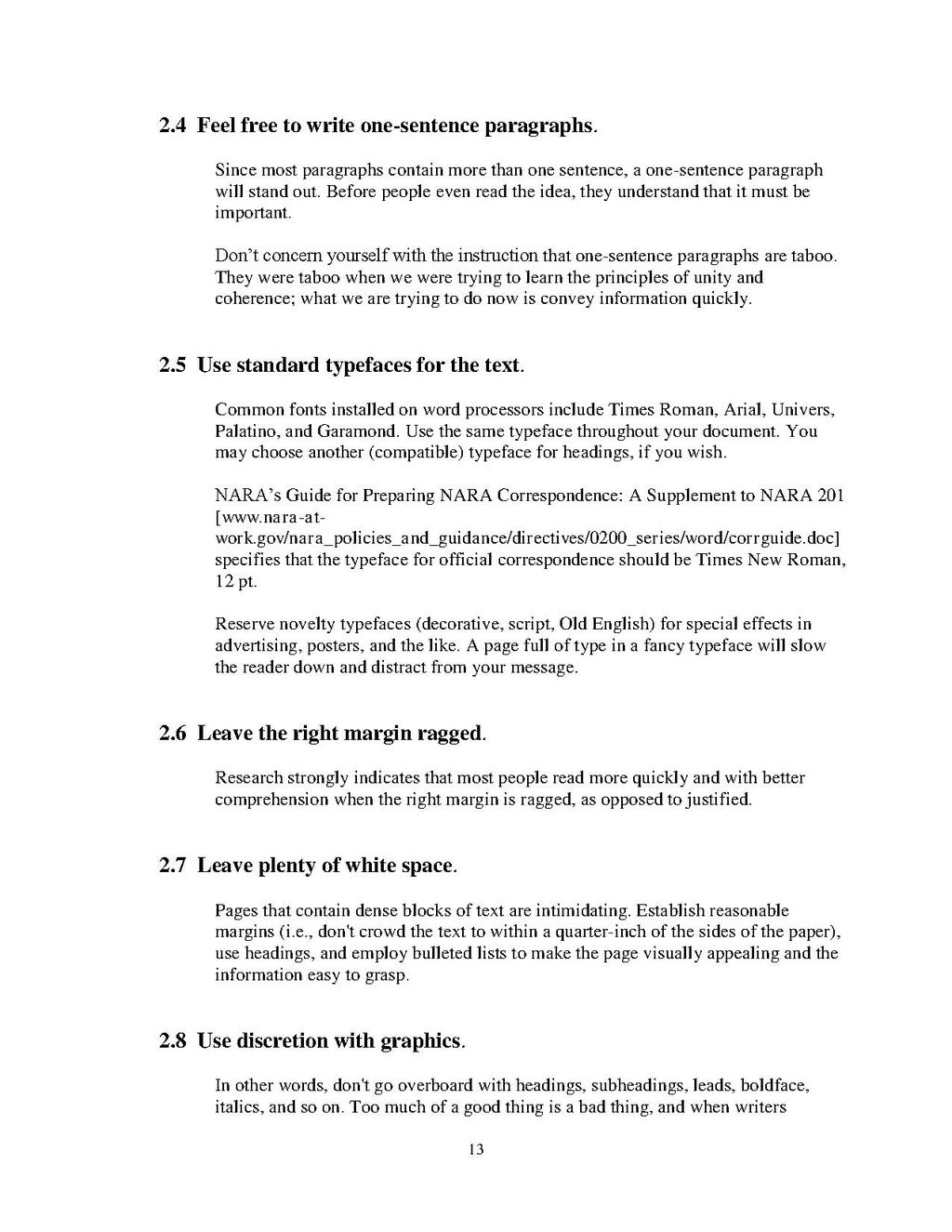2.4 Feel free to write one-sentence paragraphs.
- Since most paragraphs contain more than one sentence, a one-sentence paragraph will stand out. Before people even read the idea, they understand that it must be important.
- Don't concern yourself with the instruction that one-sentence paragraphs are taboo. They were taboo when we were trying to learn the principles of unity and coherence; what we are trying to do now is convey information quickly.
2.5 Use standard typefaces for the text.
- Common fonts installed on word processors include Times Roman, Arial, Univers, Palatino, and Garamond. Use the same typeface throughout your document. You may choose another (compatible) typeface for headings, if you wish.
- NARA's Guide for Preparing NARA Correspondence: A Supplement to NARA 201 [www.nara-atwork.gov/nara_policies_and_guidance/directives/0200_series/word/corrguide.doc] specifies that the typeface for official correspondence should be Times New Roman, 12 pt.
- Reserve novelty typefaces (decorative, script, Old English) for special effects in advertising, posters, and the like. A page full of type in a fancy typeface will slow the reader down and distract from your message.
2.6 Leave the right margin ragged.
- Research strongly indicates that most people read more quickly and with better comprehension when the right margin is ragged, as opposed to justified.
2.7 Leave plenty of white space.
- Pages that contain dense blocks of text are intimidating. Establish reasonable margins (i.e., don't crowd the text to within a quarter-inch of the sides of the paper), use headings, and employ bulleted lists to make the page visually appealing and the information easy to grasp.
2.8 Use discretion with graphics.
- In other words, don't go overboard with headings, subheadings, leads, boldface, italics, and so on. Too much of a good thing is a bad thing, and when writers
13
